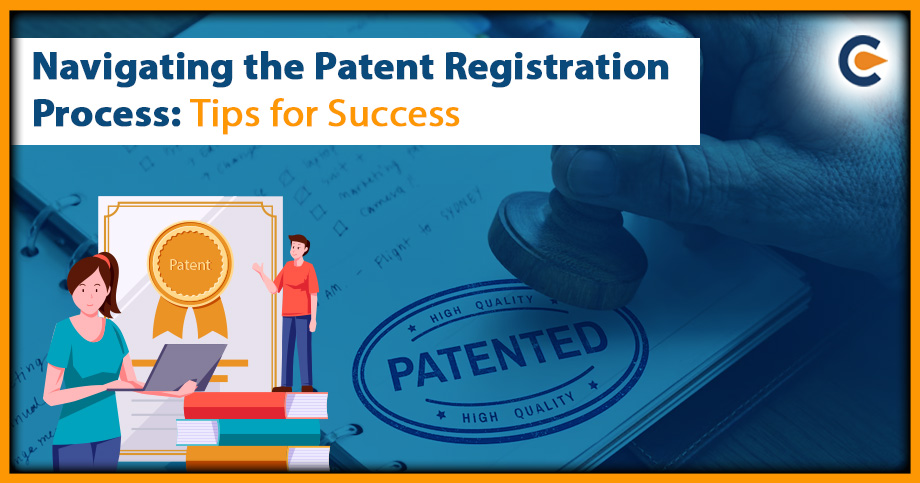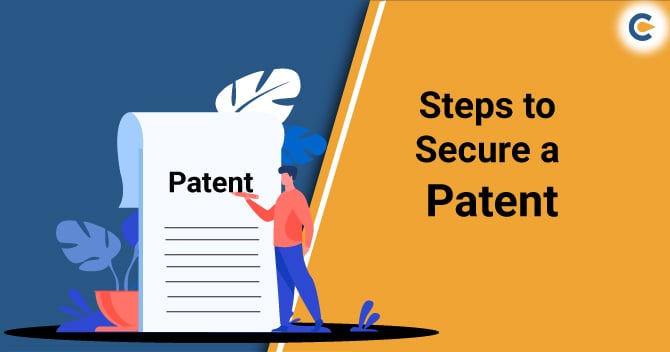A patent is a legal document given to a person who has invented or created something. The government of India grants this document. Once an inventor is granted the patent of his creation, he has the right to sell his innovation. Moreover, if something is already patented, you can still take the patent for any improvement in the already patented material. The main aim of patents is to provide creators with some special rights and to encourage such technological advancements and inventions. Scroll down to check the Patent Registration process.
What Can Be Patented?
To take a patent, the invention must satisfy three conditions as mentioned below:
- The invention shall be new and shall not exist already.
- The invention must be some new advancement to the existing technology that cannot be done easily. Therefore, obvious or simple changes cannot be granted a patent.
- Lastly, a patent must be helpful and not be used illegally.
Whereas there are a few things that cannot be patented, such as you cannot take a patent on any discovery related to nature, although you are the first one to find it, but it is not an invention or creation. Therefore, it cannot be patented.
An invention is said to be unique only if, before filing the patent application, it was not known to anyone, and it is not an obvious invention. This means that only a person holding in-depth information about a particular technology or subject matter is the only one who has invented something new and helpful.
Advantages of Patent Registration
Here are a few advantages of getting patent registration in India:
- Business Expansion
The patent holder gets all the rights to sell his innovation by taking patent registration for the invention. By taking a patent, no other person can do such an innovation. Therefore, he has exclusive rights over his patent, and by this, the patent holder’s business will automatically expand as there will be no competition.
- Decent reputation in the market
Patent holder starts getting recognition for his invention in the market. Therefore, people start appreciating him for his work. This builds a good reputation of the patent holder in the market.
- Disclosure of invention in front of the public
Patent protection permits exposure to the general public, which aids the creator in expanding his collection and gaining more resources, market value, and business partners. Public disclosure of material relating to the innovation will show the inventors’ expertise and solid grasp of the technical topic. These facts help the proprietor by luring elite and prestigious investors, stockholders, business associates, and clients.
- The patent holder gets an advantage in the long-term
The inventor will receive several benefits from marketing the creation. It only aids in obtaining a 5% royalty, but it is very beneficial to inventors who have the concept but lack the resources to promote their findings independently.
- Patent holder can easily make changes
For the duration of the patent’s validity, the proprietor is free to use his concepts however they please. It means that the proprietor has complete control over the creation, including the freedom to use, sell, and even alter it and the right to prevent others from profiting from the same concepts without his permission.
Step-by-Step Patent Registration Process
Following is the step-by-step Patent Registration process:
- Hire a Professional
The patent registration process starts with hiring a professional to help you file a patent application. Although this is not a necessary step, but it is advisable to hire a professional having experience in the field of patent. He can help you get the patent registration easily while understanding the legalities of the procedure. Furthermore, if you decide to engage a professional for patent filing, you must sign a non-disclosure agreement[1] (NDA) before discussing your invention with him. This is important, so he does not get to disclose your idea until it gets patented.
- Perform a Patent Search
The first step while getting a patent is to perform a patentability search. A patent search determines whether the invention you wish to patent is available or already registered by someone else. Once you are done with the patent search, you must create your login id and password to proceed with the patent filing procedure.
- Drafting the Patent Application
After completing the patent search, the next step is to draft a patent application as per Form 1. Moreover, every patent application must be filed with the required patent details in Form 2. Here the person registering the patent is supposed to provide the required patent specifications according to the invention. Also, the inventor can file a provisional patent application even when the invention is incomplete. In such cases, the inventor gets the time of 12 months to complete the invention.
Furthermore, a patent draft is a document which is also required while filing a patent application. This is a crucial document as it is required by the patent officer to decide whether the patent should be granted or not.
- Filing of Patent Application
There are different forms that are used while filing the patent application, let’s understand each of them one by one:
- Form 1 – The inventor is required to file the application for patent registration in this form.
- Form 2 – This form is required while filing the complete or provisional specifications about the patent.
- Form 3 – In case a patent application similar to your patent is already in any other country, you must fill Form 3 with the statement and undertaking as per section 8.
- Form 28 – Only startups and small business entities are required to fill out this form.
- Publication of Patent Application
The next step of Patent Registration process is the publication of Patent application. Once you file the patent application with the patent office. The patent application will be filed in the patent journal generally within 18 months. If you wish to publish your patent earlier, you must fill out Form 9. Moreover, the patent will not be published in the patent journal if the restriction has been imposed on the same by the patent authorities.
- Examination of Patent Application
Before a patent is ultimately issued, every claim for protection that has been submitted will be reviewed. Application for the test must be submitted in Form 18. The sooner a proposal is submitted, the sooner the reviewer will review the application. After the application is submitted, it is given to the patent clerk, who will check it to ensure it complies with the laws and regulations governing patents. The cop conducts a comprehensive investigation, thoroughly analyzing the pertinent technology and communicating any objections. The First Examination Report is the name of the document that was released in this instance (FER).
Tips for Successfully Filing a Trademark Application
Patent filing is a crucial aspect, and therefore, here are a few tips for successfully filing a trademark application:
- Run a Patent Search
The first and foremost thing is that you must search the patentable trademark and see whether your invention is already patented or not. If someone else has already taken a patent of your idea, then unfortunately, you won’t be able to patent the same. Furthermore, you must ensure that your invention is worth registering the patent. In order to understand whether your idea can be patented or not, you must consult a patent attorney.
- Double-check your invention before filing a patent application
Patent registration is an expensive and time taking process. Therefore, before filing the patent application, you must ensure your idea is well-researched and can be patented. If your patent idea does not get patented, then any other person can take your idea, make changes to it and get it patented.
- Figure out the type of patent you require
Regarding the patent filing, you can either file a provisional or a complete patent. A provisional patent is filed when your invention is still under the works and you have the fear that someone else might copy your idea. Once you apply for a provisional patent, you are given 12 months to complete your creation. At the same time, a complete patent application is filed when your invention is ready to get patented.
Conclusion
The patent registration process is quite expensive and time-taking. Therefore, before applying, it is advised to check whether your invention or idea is well-researched and whether anyone else has already patented it. To get a clear picture of whether your patent can be registered, you must consult a trademark attorney, as he guides you and help you in filing the patent application.











